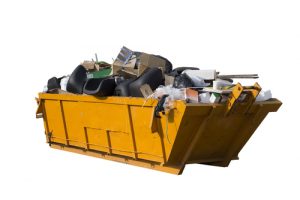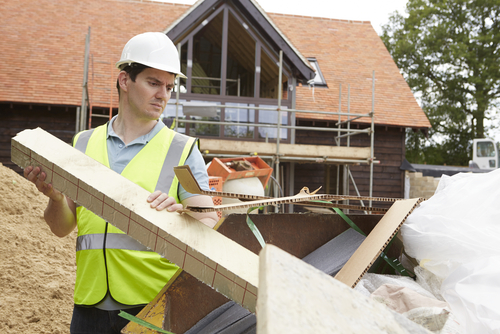How to Dispose Construction and Building Waste
By Adrian McDermott
If you work in the construction industry, then you need to find the best way to dispose construction waste and debris. Safe and compliant disposal of construction and building waste will save you money and you will be contributing to a healthy environment.

Landfill space is at a premium. Disposal costs are continuously rising. Construction and demolition waste produced can be disposed and recycled.
Construction and demolition waste can include waste from a new construction, demolition debris from old constructions, and debris from massive public works projects that include bridges, parks, highways, and stadiums.
It is a challenge to segregate waste into that which is destined for the landfills, hazardous wastes, and recyclable materials.
By following a few simple rules for the handling of waste, contractors can make things easier for themselves and also contribute to the health of the environment. From the very outset, create a separate pile for recyclable materials. You can do this in a very systematic manner when razing a property. This will allow you to carefully remove materials that can be reused and recycled. Material can be sold to salvage yards, reused, and shared with non-profit organizations.

Wooden furniture can be recycled. Asphalt, concrete, and rubble is also recyclable into new products. Metals can fetch a good amount. Recycling has helped save nearly 4500 acres of landfill area to a height of 50 feet each year. This translates to more than 3 million square yards of land saved annually.
Recycling offers both near-term and long-term benefits. With a little planning you can enjoy both. And in doing so, you prevent the needless filling up of landfills. When you recycle, you save on the costs of debris removal and hauling. You don’t have to pay the very high landfill fees. You contribute towards the environment by supplying recyclable materials that are used to produce aggregate products, and these are cheaper to purchase.
Recycled material used for gravel helps bring down the need for gravel mining. The use of recycled concrete in roadways saves space in landfills and eliminates pollution that would have otherwise happened in transporting concrete to the construction sites.
A lot of material salvaged from a construction site can fetch good rates in the secondhand market. This includes fixtures, doors, furniture, bricks, glass, wood, and things that you would find in a yard or a garden. Moreover, what you donate can get you tax benefits.
Wood can yield biomass fuel. Papers, plastics, metals can be recycled into new products. Dirt, pebbles, sand, rocks etc. are used to provide Alternative Daily Cover (ADC) in landfills.

